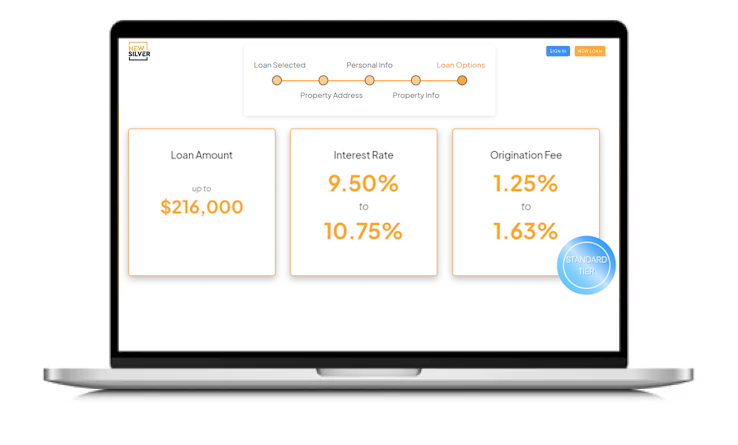The Short Answer
Underwriting is a critical process in the lending industry, where mortgage lenders assess a borrower’s ability to repay a loan by evaluating various financial risks. This process, common in industries like insurance, banking, and securities markets, determines the terms and costs associated with loans or policies.
How long does underwriting take? The timeline for underwriting varies significantly depending on the type of loan, ranging from a few days to several weeks.
Residential Mortgages: Typically take 30 to 45 days, though it can be faster or slower depending on individual circumstances.
Investment Properties: Usually take 2 to 6 weeks, with a standard timeline of 3 to 4 weeks.
Commercial Mortgages: Can take 4 to 12 weeks, depending on the complexity of the property.
Business Loans: Generally take 2 to 8 weeks, with SBA loans often taking longer.
To expedite the underwriting process, borrowers can take proactive steps such as preparing documents ahead of time, responding quickly to the mortgage lender requests, being transparent about their financial situation, avoiding major financial changes, and ensuring timely property appraisals and title searches.
However, if a mortgage application is denied, it’s important to understand the reasons behind the denial and take corrective actions. Improving credit, reducing debt, finding a co-signer, increasing the down payment, and reapplying after strengthening finances are all strategies that can enhance the chances of approval in the future.
Skip To
What Does Underwriting Actually Mean?
Underwriting is the process used by mortgage lenders to determine whether a borrower is likely to be able to pay back the loan. This involves researching, evaluating and quantifying the financial risk associated with the loan, for a fee. The term is commonly used in various industries, including insurance, banking, and securities markets.
The underwriting process therefore determines the premiums and the cost of the policy or loan, by assessing the borrowers credit, and any other factors that are concerned with their ability to pay back the loan or take out a policy.

How Long Does Mortgage Underwriting Take?
If you’re wondering “how long does underwriting take?”, mortgage underwriting can take anywhere from a few days to several weeks, depending on several factors such as the documentation completion time, the type of loan, the mortgage lender’s process, the complexity of the application, and the appraisal timeline. Let’s take a closer look at various types of loans and their underwriting timelines.
For Residential Mortgages
Underwriting generally takes between 30 to 45 days, though the timeline can vary depending on the individual circumstances of each home buyer. In some cases, the mortgage underwriting process may be completed in just a few days.
A significant portion of the closing process involves your lender’s efforts to verify your creditworthiness and ensure that the loan doesn’t present an excessive risk. Much of this evaluation occurs during underwriting. If the mortgage underwriter identifies any issues, it could potentially delay your closing.
For Investment Properties (Non-Owner Occupied Loans)
The underwriting process for an investment property loan typically takes 2 to 6 weeks but this depends on a number factors such as the type of loan, the type of property, the borrowers financial profile and the lender’s process. The standard timeline is around 3-4 weeks, however some underwriting processes can be as fast as 2 weeks, and some can take 6 weeks.
For Commercial Mortgages
The underwriting process for commercial mortgages typically takes longer than residential mortgages. While residential mortgages takes anywhere between 30 and 45 days usually, commercial mortgage underwriting can take anywhere from 4 to 12 weeks. This timeframe hinges on the complexity of the property, for example a mixed-use development would require a more detailed analysis and this is more time-consuming, which makes the entire underwriting process take longer.
For Business Loans
The underwriting process for business loans can take between 2 and 8 weeks to complete. The timeline for underwriting on business loans depends on the loan itself. A standard business loan may take 2 to weeks to underwrite, for example, while an SBA loan may take 4 to 8 weeks to underwrite. On the other hand, lines of credit typically only take 1 to 3 weeks to underwrite.

How To Speed Up The Underwriting Process
The underwriting process can move along quicker if borrowers are prepared in various ways. Here’s how borrowers can do their part to speed up the process…
Tip 1: Prepare your documents ahead of time
Incorrect information is one of the biggest factors that slows down the underwriting process. So, getting the necessary documents ready ahead of time is a great way to speed up the process. It eliminates various rounds of back and forth communication between parties involved, and cuts down on the time needed to do the underwriting process. These documents include tax returns, W-2s, pay stubs, bank statements, and proof of assets.
Tip 2: Communicate timeously to lender
Responding quickly to requests for additional documentation or clarification from your lender can prevent delays. It’s also a good idea to address any issues that could become a problem with your lender, as soon as possible, to avoid having to deal with these during the mortgage underwriting process.
Tip 3: Be cautious with your finances
It’s a good idea not to make any large financial changes, particularly ones that could impact your credit, such as changing jobs or taking on more debt, before going through the underwriting process. These changes can lead to the underwriting process getting delayed by extra scrutiny.
Tip 4: Get a property appraisal and title search done
As soon as your offer is accepted, it’s a good idea to make sure that the property appraisal and title search are ordered. Delays in receiving the appraisal or resolving title issues are common reasons for delays in the mortgage underwriting process.
Tip 5: Be transparent
It’s important to include any information pertaining to the underwriting process upfront, without withholding anything. This includes additional sources of income, debts, or changes in employment. Being transparent will reduce the chance of delays happening in the process.

What To Do If Your Mortgage Application Is Denied
The final step of the underwriting process involves acceptance or rejection of the loan application. If the underwriter determines that your overall risk is too high, you’ll receive a letter of adverse action explaining that your application is denied.
If your mortgage application is denied, there are various ways to handle this.
1. Understand why your application was denied
There are a number of reasons why a mortgage application is denied, once the mortgage underwriting process has been completed. These reasons include:
- Insufficient income or high debt ratios (or DTI)
- Low credit score
- Issues with the property such as a low valuation
- Missing documents
- Financial discrepancies
It’s important to take note of what your denial letter states, it should outline the reason why your application was denied. If it doesn’t, it’s a good idea to contact the lender to make sure that you understand why your application was denied, in order to decide on your next steps.
2. Review your credit
Review your credit report and figure out which areas you can improve on that impacts your credit history. A good start is usually to pay down existing debts, making all payments on time, and reducing credit card balances. Avoid opening new lines of credit as well, this will improve your credit report and your financial strength.
3. Reduce your debt
Reducing your existing debt, particularly high-interest credit card debt, can help your overall debt to income ratio. A lower debt to income ratio can make you more attractive to lenders.
4. Find someone to co-sign
You can further reduce the risk for lenders by finding someone to co-sign your loan. This should be a person who has strong credit and is financially stable, as this will decrease the risk for lenders.
5. Increase your down payment
A larger down payment reduces the loan amount you need and can lower your DTI ratio. It also shows lenders that you’re a lower-risk borrower.
6. Strengthen your finances and re-apply
A good option for the denial of a mortgage application is to wait, strengthen your finances and improve your credit score, and then re-apply for the mortgage. In many cases, the mortgage would be approved if you were to come back with a better financial position and an improved credit history that poses less of a risk for the lender.




